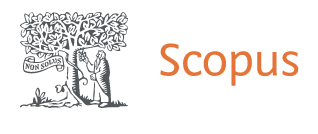Experimental Investigation Study into the Mechanical Properties of Autoclaved Aerated Concrete and Its Bond Material
DOI:
https://doi.org/10.31272/jeasd.2548Keywords:
Autoclaved aerated concrete, Masonry, Mechanical properties, Mortar material, Push testAbstract
Most mechanical properties are often required for the design and linear or nonlinear modeling of masonry structures, as well as performance-based design. This article presents an experimental evaluation of the mechanical properties of autoclaved aerated concrete AAC masonry blocks and common bonding and plastering materials. The tests covered the most important mechanical properties of the materials, including density, compressive strength, tensile strength, flexural strength, modulus of elasticity, Poisson's ratio, and shear bond. Samples of AAC blocks were prepared and tested, in addition to three typical materials utilized with these blocks: cement-sand, gypsum, and adhesive mortars. The shear bond test as triplet prisms was conducted to estimate the AAC block and bond material shear strengths. The results showed that cement-sand mortar was superior to other bonding materials in compressive strength. In contrast, the adhesive mortar showed higher tensile and shear strength values due to its special composition, which gives greater adhesive forces between different materials
References
C. Fudge, F. H. Fouad, and R. E. Klingner, “Autoclaved Aerated Concrete,” Developments in the Formulation and Reinforcement of Concrete (Second Edition) Woodhead Publishing Series in Civil and Structural Engineering, pp. 345–363, Jan. 2019, doi: https://doi.org/10.1016/b978-0-08-102616-8.00015-0
Ahmad et al., “A Step Towards Sustainable Concrete with Substitution of Plastic Waste in Concrete: Overview on Mechanical, Durability and Microstructure Analysis,” Crystals, vol. 12, no. 7, p. 944, Jul. 2022, doi: https://doi.org/10.3390/cryst12070944
W. Emad, A. S. Mohammed, R. Kurda, K. Ghafor, L. Cavaleri, S. Qaidi, A.M.T. Hassan, P. G. Asteris, “Prediction of concrete materials compressive strength using surrogate models”, Structures, vol. 46, pp. 1243-1267, 2022. https://doi.org/10.1016/j.istruc.2022.11.002.
O. F. Halici et al., “From Experiments To Seismic Design Rules For Structures Built With Reinforced Autoclaved Aerated Concrete Panels,” Ce/Papers, vol. 2, no. 4, pp. 275–282, 2018, doi: https://doi.org/10.1002/cepa.831.
A. Raj, A. C. Borsaikia, and U. S. Dixit, “Bond Strength Of Autoclaved Aerated Concrete (AAC) Masonry Using Various Joint Materials,” J. Build. Eng., vol. 28, p. 101039, 2020, doi: https://doi.org/10.1016/j.jobe.2019.101039.
A. Raj, A. Ch, and B. Uday, “Compressive And Shear Bond Strengths Of Grooved AAC Blocks And Masonry,” Mater. Struct., vol. 8, 2019, doi: https://doi.org/10.1617/s11527-019-1428-8.
[4]J. A. Thamboo and M. Dhanasekar, “Characterisation of Thin Layer Polymer Cement Mortared Concrete Masonry Bond,” Construction and Building Materials, vol. 82, pp. 71–80, May 2015, doi: https://doi.org/10.1016/j.conbuildmat.2014.12.098.
V. Alecci, M. Fagone, T. Rotunno, and M. De Stefano, “Shear Strength of Brick Masonry Walls Assembled With Different Types Of Mortar,” Constr. Build. Mater., vol. 40, pp. 1038–1045, 2013, https://doi.org/10.1016/j.conbuildmat.2012.11.107.
S. Barattucci, V. Sarhosis, A. W. Bruno, A. M. D’Altri, S. de Miranda, and G. Castellazzi, “An Experimental and Numerical Study on Masonry Triplets Subjected to Monotonic and Cyclic Shear Loadings,” Construction and Building Materials, vol. 254, p. 119313, Sep. 2020, doi: https://doi.org/10.1016/j.conbuildmat.2020.119313.
G. Sarangapani, B. V. Venkatarama Reddy, and K. S. Jagadish, “Brick-Mortar Bond and Masonry Compressive Strength,” Journal of Materials in Civil Engineering, vol. 17, no. 2, pp. 229–237, Apr. 2005, doi: https://doi.org/10.1061/(asce)0899-1561(2005)17:2(229).
S. H. Basha, Z.-X. Guo, and X. Xie, “Effect of Structural Bonding Patterns on Mechanical Characteristics of Clay Brick Masonry under Different Loadings Using Digital Image Correlation Technique,” Journal of Materials in Civil Engineering, vol. 34, no. 11, Nov. 2022, doi: https://doi.org/10.1061/(asce)mt.1943-5533.0004457.
S. Andlsun, “A Study on Material Properties of Autoclaved Aerated,” Middle East Tech. Univ., p. 123, 2006.
[8]S. Aroni, Autoclaved Aerated Concrete - Properties, Testing and Design, 1st ed. London: CRC Press, 2004. Available doi: https://doi.org/10.1201/9781482271195.
[9]D. Kocab, R. Halamová, and B. Kucharczyková, “Determination of the Static Modulus of Elasticity of Cement Mortars in the Early Stage of Ageing,” MATEC Web of Conferences, vol. 310, pp. 00029–00029, Jan. 2020, http://doi.org/10.1051/matecconf/202031000029.
A. Raj, A. C. Borsaikia, and U. S. Dixit, “Evaluation of Mechanical Properties of Autoclaved Aerated Concrete (AAC) Block and its Masonry,” J. Inst. Eng. Ser. A, vol. 101, no. 2, pp. 315–325, 2020, doi: https://doi.org/10.1007/s40030-020-00437-5.
ASTM, “Standard Specification for Autoclaved Aerated Concrete ( AAC ) 1,” vol. i, no. Reapproved, pp. 1–7, 2017, doi: https://doi.org/10.1520/C1693-11R17.2.
ASTM, “Standard Test Method for Laboratory Determination of Pulse Velocities and Ultrasonic Elastic Constants of Rock," vol. 14, 2000.
W. Equipment, S. Molds, M. Chamber, T. Machine, and T. Clips, “Standard Test Method for Tensile Strength of Chemical-Resistant Mortar, Grouts, and Monolithic Surfacings,” vol. i, no. Reapproved 2008, pp. 3–6, 2009.
U. M. E. Cancino, “Behavior of Autoclaved Aerated Concrete Shear Walls With Low-Strength AAC,” MSc thesis, The University of Texas at Austin. December, 2003.
N. Narayanan and K. Ramamurthy, “Structure and Properties of Aerated concrete: a Review,” Cement and Concrete Composites, vol. 22, no. 5, pp. 321–329, Oct. 2000, https://doi.org/10.1016/S0958-9465(00)00016-0.
F. Gökmen, “Seismic Behavior of Autoclaved Aerated Concrete Reinforced Vertical Panel Buildings,” a Thesis Submitted To The Graduate School Of Natural And Applied Sciences Of Middle East Technical University, 2017. Available: http://etd.lib.metu.edu.tr/upload/12621425/index.pdf
ASTM, “Standard Test Method for Fundamental Transverse, Longitudinal, and Torsional Resonant Frequencies of Concrete Specimens,” pp. 1–7, 2019. https://doi.org/10.1520/C0215-19
F. Li, G. Chen, Y. Zhang, Y. Hao, and Z. Si, “Fundamental Properties and Thermal Transferability of Masonry Built by Autoclaved Aerated Concrete Self-Insulation Blocks,” Materials, vol. 13, no. 7, p. 1680, Apr. 2020, doi: https://doi.org/10.3390/ma13071680.
Downloads
Key Dates
Received
Revised
Accepted
Published Online First
Published
Issue
Section
License
Copyright (c) 2025 Sarraa Dhiyaa, Ashraf Alfeehan (Author)

This work is licensed under a Creative Commons Attribution 4.0 International License.

















